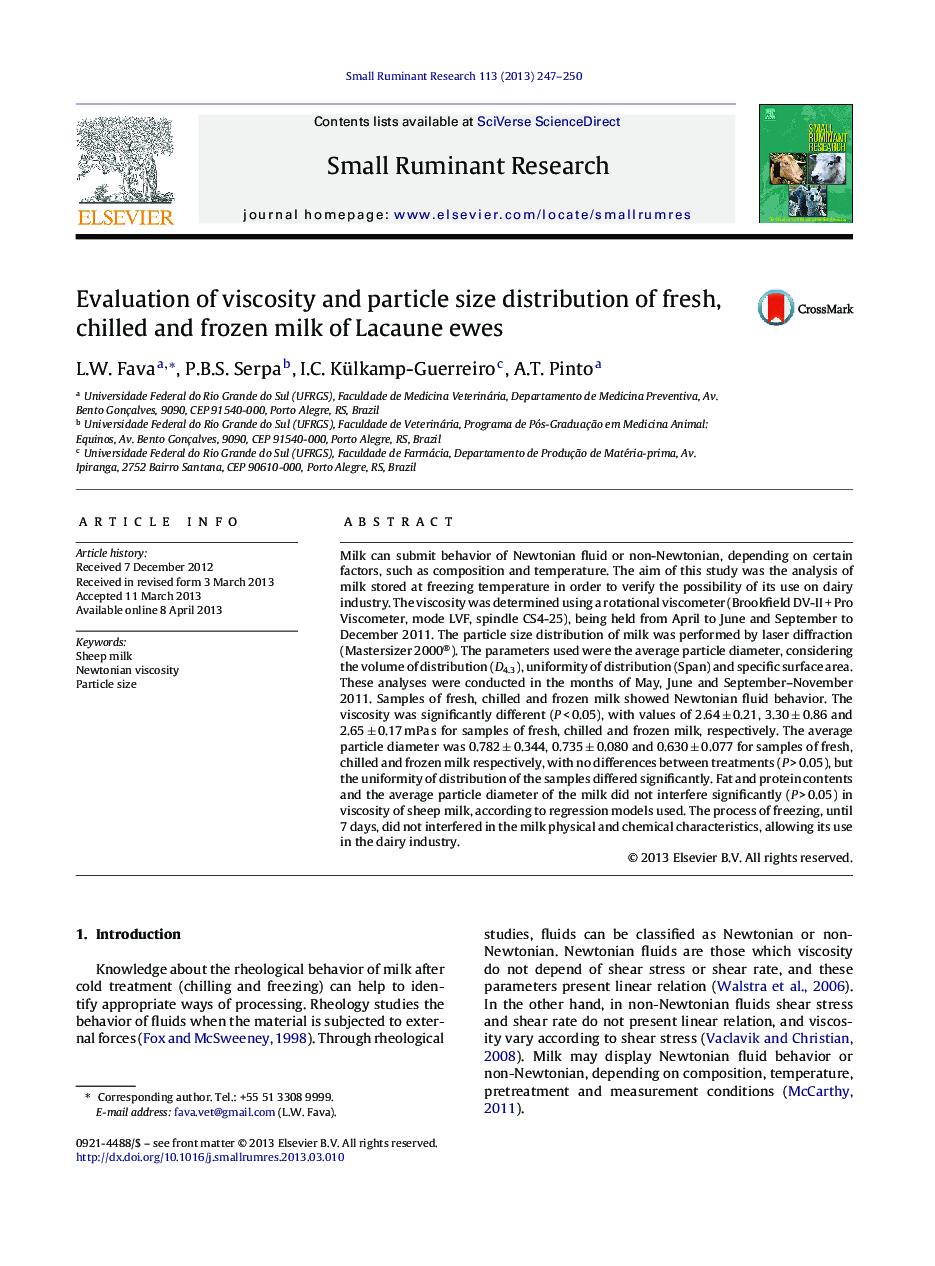| Article ID | Journal | Published Year | Pages | File Type |
|---|---|---|---|---|
| 5795978 | Small Ruminant Research | 2013 | 4 Pages |
Milk can submit behavior of Newtonian fluid or non-Newtonian, depending on certain factors, such as composition and temperature. The aim of this study was the analysis of milk stored at freezing temperature in order to verify the possibility of its use on dairy industry. The viscosity was determined using a rotational viscometer (Brookfield DV-II + Pro Viscometer, mode LVF, spindle CS4-25), being held from April to June and September to December 2011. The particle size distribution of milk was performed by laser diffraction (Mastersizer 2000®). The parameters used were the average particle diameter, considering the volume of distribution (D4.3), uniformity of distribution (Span) and specific surface area. These analyses were conducted in the months of May, June and September-November 2011. Samples of fresh, chilled and frozen milk showed Newtonian fluid behavior. The viscosity was significantly different (P < 0.05), with values of 2.64 ± 0.21, 3.30 ± 0.86 and 2.65 ± 0.17 mPa s for samples of fresh, chilled and frozen milk, respectively. The average particle diameter was 0.782 ± 0.344, 0.735 ± 0.080 and 0.630 ± 0.077 for samples of fresh, chilled and frozen milk respectively, with no differences between treatments (P > 0.05), but the uniformity of distribution of the samples differed significantly. Fat and protein contents and the average particle diameter of the milk did not interfere significantly (P > 0.05) in viscosity of sheep milk, according to regression models used. The process of freezing, until 7 days, did not interfered in the milk physical and chemical characteristics, allowing its use in the dairy industry.
